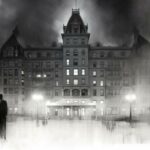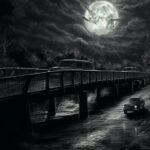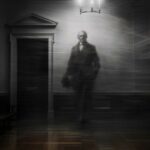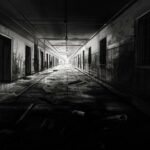Table of Contents
Baltimore brims with chilling tales and spectral presences that echo through its historic streets and buildings. Adventurers seeking the thrill of the paranormal can explore the city’s most haunted locations, each with its own eerie history and ghostly legends. From the shadowy corners of Fells Point to the mysterious ambiance of Mt Vernon, these sites beckon the brave to uncover the secrets lurking within.
If you are doing any kind of paranormal investigation here, you might want to take a look at our ghost hunting equipment list. Locations like this get a reputation because they are high activity and you don’t need much to see for yourself.
Fells Point

Fells Point, a historic waterfront neighborhood in Baltimore, Maryland, harbors a rich tapestry of ghost stories and eerie legends, its cobbled streets echoing with whispers from the past. The area, known for its maritime history, has transformed from a shipbuilding powerhouse into a charming district dotted with pubs, shops, and residences. Yet, beneath its inviting facade, Fells Point holds secrets that emerge when the sun dips below the horizon.
One of the most well-known haunted spots in Fells Point is The Horse You Came In On Saloon. This storied establishment claims not only to be the oldest continuously operating saloon in America but also the last place Edgar Allan Poe was seen alive before his mysterious death. Patrons and employees alike tell tales of unexplained phenomena, insisting that Poe’s spirit still lingers, forever entwined with the place he frequented in life.
Another spine-tingling site is The Admiral Fell Inn, an establishment with a history dating back to the 1700s. Guests often report ghostly encounters and uncanny experiences, such as hearing invisible children playing in the halls or seeing sailors and long-gone guests from centuries past. The inn’s past as a boarding house for sailors and a theater adds layers to its haunted reputation.
The Robert Long House, the oldest residential home in Baltimore, also resides in Fells Point. The house, now a museum, has its share of spectral sightings. The benevolent ghost of Robert Long himself is said to watch over the property, ensuring his beloved home remains well-kept and appreciated by visitors seeking a glimpse into the past.
Near the water’s edge, the Bertha’s Mussels restaurant has its own ghostly patron. The spirit of a former sea captain is rumored to be in search of his wayward crew, his presence announced by the creak of floorboards and the sudden chill in the air.
Lastly, the Bond Street Wharf is a place where the past seems to bleed into the present. The wharf, once bustling with sailors, merchants, and immigrants, has seen its share of tragedy and hardship. Late-night wanderers have reported eerie sightings of ghostly figures from the corner of their eye, only to find nothing when they turn to look.
The hauntings of Fells Point are as much a part of its character as the historic architecture and waterfront views. For those brave enough to explore its shadows, the neighborhood offers a window into a world where the line between the living and the dead blurs, and every creaking door or sudden draft tells a story of the spirits that refuse to leave.
I was strolling by The Horse You Came In On Saloon in Fells Point one night, and I swear I felt a chill like Edgar Allan Poe’s ghost brushed right past me, still hanging around his old haunt. And don’t even get me started on The Admiral Fell Inn – folks say the spirits there throw parties at night, and you can hear the echoes of their old-timey music and laughter long after the living have gone to bed.
Garrett Jacobs Mansion
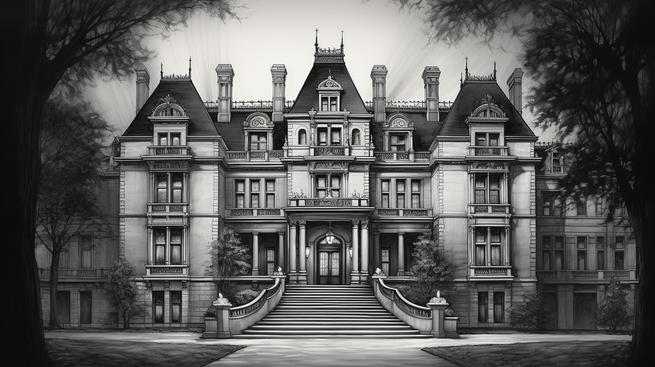
Nestled in the heart of Baltimore, the Garrett-Jacobs Mansion stands as a testament to the city’s rich history and architectural grandeur. Yet, this majestic abode holds more than just the echoes of high society gatherings and opulent parties. Whispers of a haunted past cling to the mansion’s ornate walls, making it a treasure trove for ghost hunters and history enthusiasts alike.
The mansion, a jewel in the crown of Baltimore’s Mount Vernon neighborhood, has been the subject of many ghostly tales over the years. Some say the spirits of its previous inhabitants have never left, their presence an indelible mark on the stately home. The most prominent specter believed to roam the halls is that of Mary Frick Garrett Jacobs, the widow of Baltimore & Ohio Railroad magnate Robert Garrett. After her husband’s death, Mary expanded and lavished the mansion with all the luxury of the Gilded Age, yet some say she lingers, perhaps unable to part with her beloved creation.
Mary is not alone in her ethereal occupation of the mansion. Unseen hands reportedly move objects, spectral music drifts through the air, and sudden cold spots appear, sending shivers down the spines of the living. These paranormal breadcrumbs lead the curious on a dance with the unknown, each hoping to catch a glimpse of the mansion’s otherworldly residents.
The Garrett-Jacobs Mansion, with its theatrical whispers from beyond, serves as a beacon for those who wish to peer behind the veil. It’s a place where the past is always present, and the line between this world and the next is as thin as the mansion’s gossamer curtains that sway without a breeze. Whether one believes in ghosts or not, the mansion’s haunted history is a thread woven into the fabric of Baltimore’s narrative, a story that continues to captivate and enchant to this day.
I’ve heard folks around Baltimore say the old Garrett-Jacobs Mansion is haunted, especially by Mary herself, who can’t seem to leave the fancy place she loved so much. Some nights, you can almost hear the rustle of her dress as she wanders through those grand rooms.
Lord Baltimore Hotel

Nestled in the heart of Baltimore, the Lord Baltimore Hotel stands as a towering testament to both luxury and spectral legends. With its French Renaissance flair, the hotel, designed by William Lee Stoddart, threw open its doors to the public on December 30, 1928, quickly becoming Maryland’s crowning architectural achievement at 289 feet tall.
Yet, beneath its grandeur lies a tapestry of tragedy. The Great Depression, a period that brought America to its knees, also ushered in a series of harrowing tales at the Lord Baltimore Hotel. It is widely whispered that the hotel’s rooftop became the final stepping stone for over 20 despondent souls, who, in the wake of the stock market crash, leapt to their deaths.
These sorrowful spirits, it seems, have signed a long-term lease with the hotel. Guests and staff alike report eerie encounters and inexplicable events that suggest the departed are far from resting in peace. The Lord Baltimore Hotel, now a canvas for the supernatural, is often listed among the top ten haunted hotels in the United States, a ranking that chills the spine as much as it intrigues the mind.
In 1958, the hotel took a bold stand against the divisive currents of the time by dropping its racially restrictive guest policies—a move that was ahead of the curve in an era rife with segregation.
The Lord Baltimore Hotel’s walls, if they could talk, would tell a story of opulence shadowed by the specters of the past. It remains a beacon for those seeking a brush with history and perhaps even an encounter with the otherworldly.
I was chilling in my room at the Lord Baltimore Hotel when the air went cold and I swear I saw a shadowy figure drift by in the hallway, even though no one was there. It totally gave me the creeps, like one of those ghosts from the old stories just decided to say “hey.”
Med Chi Building
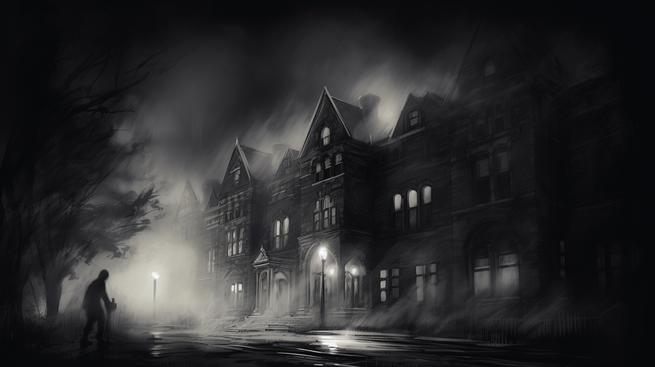
The Med Chi Building, also known as the Medical and Chirurgical Faculty of Maryland, stands as an imposing structure in Baltimore, Maryland, with a history that whispers tales of the supernatural. The building, erected in 1909, serves as the headquarters for the Maryland State Medical Society and has long been a fixture in the city’s healthcare landscape. Over the years, it has become a storied edifice, housing more than just medical records and offices; it is said to be the home of otherworldly residents whose footsteps echo in its halls long after the sun has set.
The ghostly encounters in the Med Chi Building are not mere fabrications spun by fanciful minds; they are the bone-chilling experiences of those who walk its corridors. Employees and visitors alike have reported phantom footsteps that follow silent and unseen. The air sometimes carries the intangible weight of unseen presences, and doors are known to swing open as if by an invisible hand, sending a shiver down the spine of those who witness it.
One of the most frequently recounted apparitions is that of a former caretaker, whose dedication to the building seemingly did not end with his death. His spectral figure is often spotted in the early morning hours, performing his duties as if he never left. The chilling sight of his ghostly form is enough to make the skin crawl, and his loyalty to the Med Chi Building has become a legend in its own right.
Within the walls of this historic beacon of medicine, the past lingers palpably, with stories of the supernatural becoming as much a part of the building’s identity as its medical heritage. The Med Chi Building has become a synecdoche for the unexpected intersection of the medical and the mystical, a place where the heartbeat of history is felt through more than just the stethoscope.
The haunted history of the Med Chi Building is a vivid tapestry woven with the threads of fact and folklore, creating a narrative that fascinates skeptics and believers alike. Whether one sees these tales as the colorful embellishments of the imagination or as genuine encounters with the beyond, there is no denying that the Med Chi Building holds a unique place in the annals of Baltimore’s ghostly lore.
I was working late at the Med Chi Building one night when I heard footsteps in the hall, but when I looked, nobody was there. It totally freaked me out, especially after someone told me the place is haunted.
Fort Mchenry
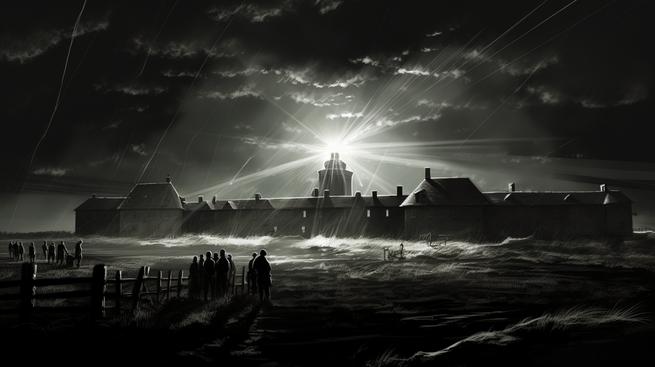
The haunted history of Fort McHenry in Baltimore, Maryland, echoes with the whispers of the past. Standing as a sentinel over Baltimore Harbor, this historic bastion has seen more than its fair share of battle and bloodshed. Built in 1798, the fort is best known for its valiant defense during the War of 1812, a pivotal moment that saw the American flag flying high against the British Navy’s onslaught.
Fort McHenry’s walls, constructed in the strategic pentagonal bastion style, were once a stage for the thunder of cannons and the clash of war. In the dead of night, some say the air still hums with the echoes of soldiers’ footsteps and the distant boom of artillery—a symphony of the fort’s storied past.
It’s no wonder that the grounds are rumored to be a hotbed of paranormal activity; the weight of history hangs heavy in the air. Visitors and staff have reported eerie encounters and unexplained phenomena that send shivers down the spine. Tales of ghostly apparitions and spectral soldiers standing guard in the twilight blur the line between the living and the dead. It’s as if the very walls of the fort whisper tales of the souls who once fought and fell within its embrace.
Despite the otherworldly reputation, the management of Fort McHenry is keen to keep the focus on education rather than exploitation. They’ve put up hurdles like a “special use permit” to ensure that any paranormal investigations conducted on the premises are done with respect and discretion. It’s as though the fort itself is a guardian of history, not just a mere playground for ghost hunters.
In the heart of Baltimore, Fort McHenry remains a beacon of the past, its haunted history woven into the fabric of American heritage. Whether it’s the spectral soldiers standing watch or the invisible drums of war that beat in the night, one thing is certain: Fort McHenry is a place where history lives—and, some would say, where the spirits of history refuse to die.
I was walking near the barracks at Fort McHenry when I heard the clear sound of a drumbeat, but when I spun around, there wasn’t a soul in sight. It gave me the creeps, like the ghost of some old soldier was right there, marching beside me.





